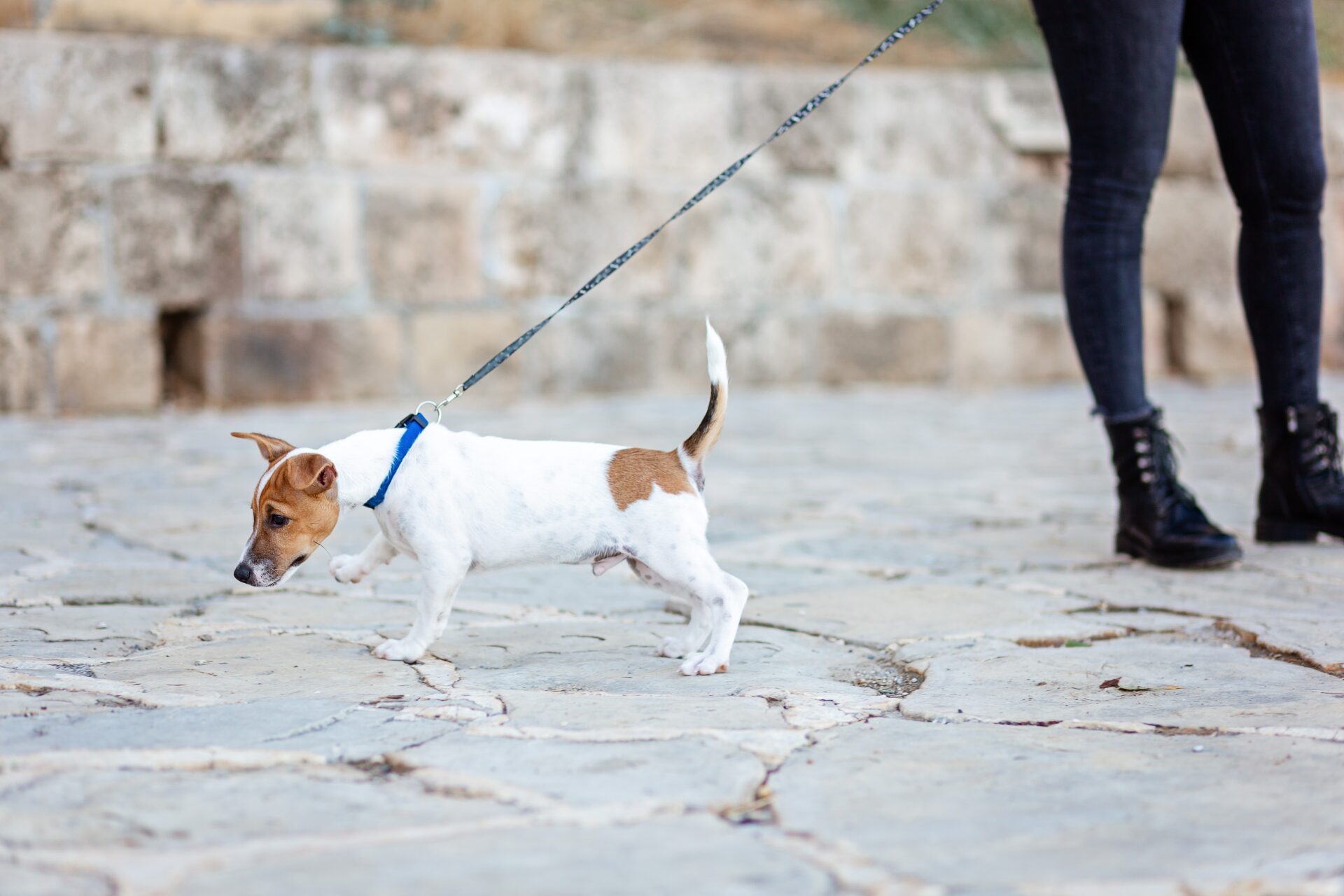Walking your dog should be an enjoyable experience, but if your dog pulls on the leash, it can quickly turn into a frustrating tug-of-war. Leash pulling is a common behavior, especially in energetic or curious dogs. Fortunately, with patience and consistent training, you can teach your dog to walk calmly by your side.
In this guide, we’ll explore why dogs pull on the leash and provide a step-by-step approach to leash training your dog. Whether you’re working with a rambunctious puppy or a strong adult dog, these tips will help make your walks more enjoyable for both of you.
Some of the links on this page are affiliate links, which means we may earn a commission at no extra cost to you if you make a purchase. As an Amazon Associate I earn from qualifying purchases. We only recommend products we genuinely love and think you’ll find helpful!
Why Do Dogs Pull on the Leash?
Before we dive into leash training techniques, it’s important to understand why dogs pull in the first place. Dogs pull on the leash for several reasons:
- Excitement: Walks are stimulating! Your dog may pull to reach interesting smells, sights, or sounds.
- Natural instinct: Dogs have a faster walking pace than humans, so pulling can happen simply because they want to move more quickly.
- Lack of training: If your dog hasn’t been taught leash manners, they won’t understand what’s expected of them.
Pulling is a self-rewarding behavior—when your dog pulls and you follow, they learn that pulling gets them what they want. Breaking this habit requires consistency and teaching them that staying close to you is more rewarding than pulling ahead.
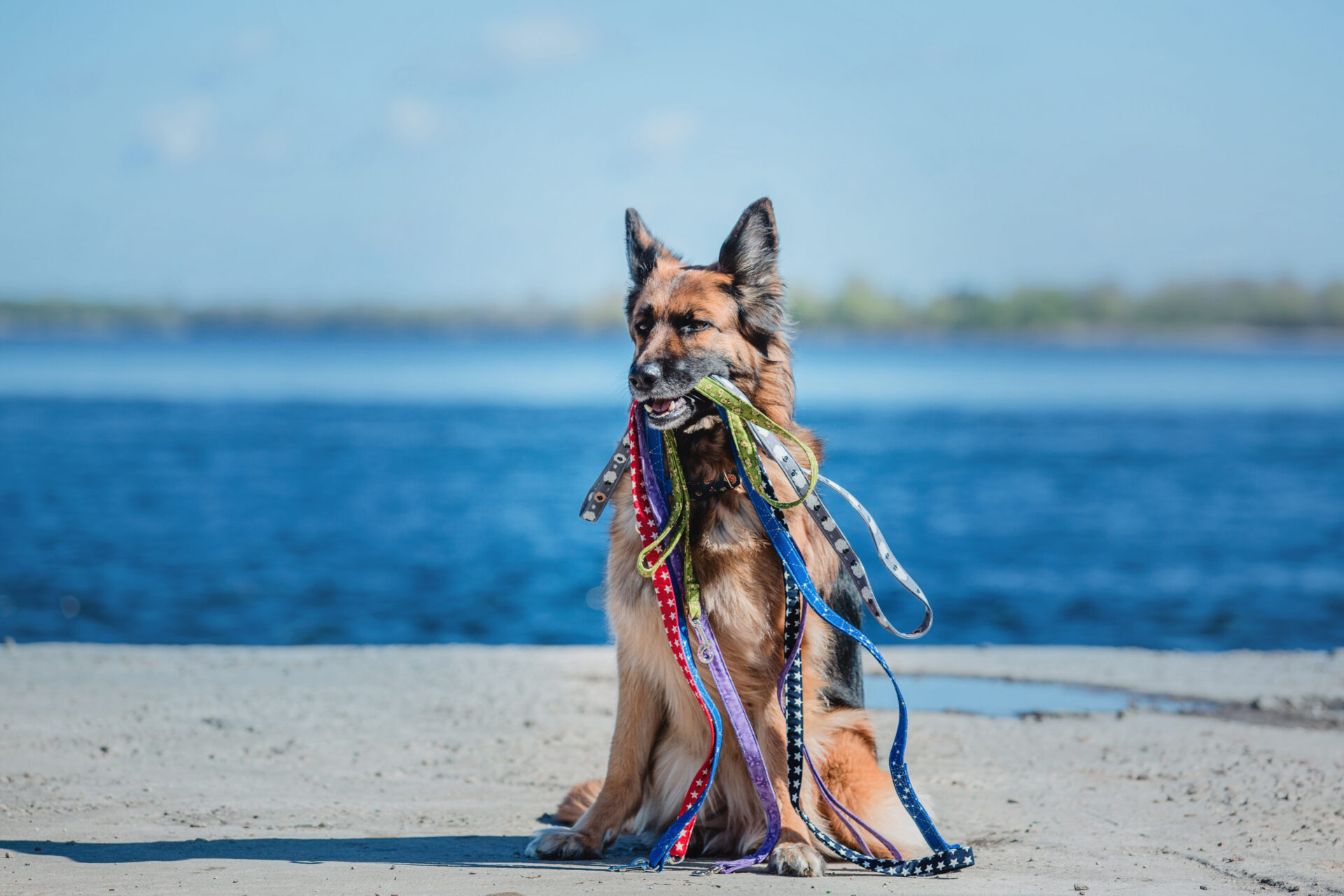
Step 1: Choose the Right Equipment
The first step in leash training is ensuring you have the proper tools. The right equipment can make a significant difference in your success.
- Leash: Opt for a sturdy, standard leash (4–6 feet) rather than a retractable one. Retractable leashes encourage pulling by giving your dog more freedom to roam.
- Harness or collar: A no-pull harness is ideal for dogs that pull. These harnesses are designed to discourage pulling by redirecting your dog’s movement when they try to pull ahead.
- Treat pouch: A small bag of high-value treats will be your best friend during leash training sessions.
Avoid choke collars or prong collars, as they can cause discomfort or injury and may create a negative association with walks.
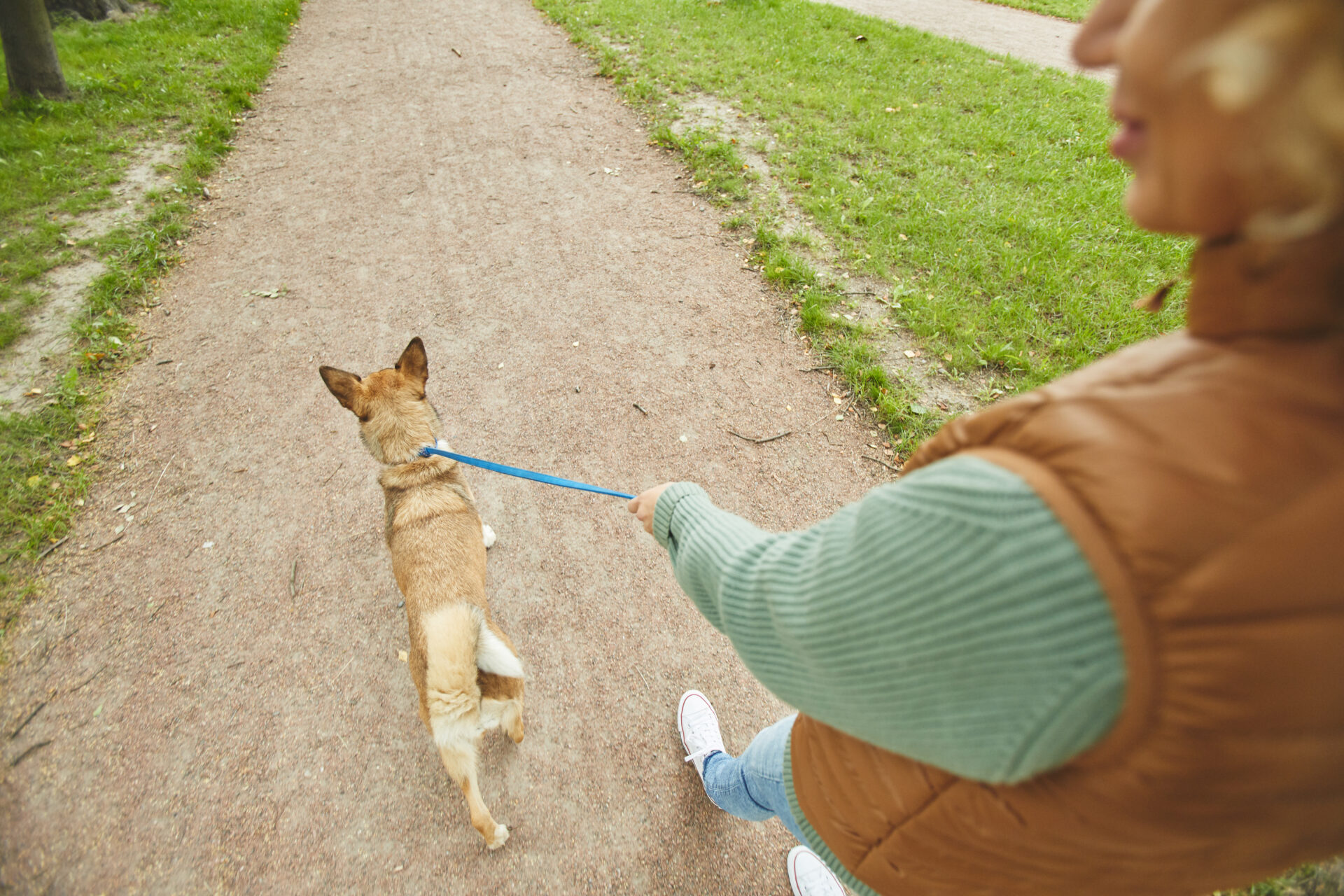
Step 2: Teach “Loose Leash” Basics at Home
Before you head out into a world full of distractions, start training your dog to walk on a loose leash in a calm, controlled environment like your backyard or living room.
1. Introduce leash pressure: Gently hold the leash and let your dog move around. When they pull, stop walking. Reward them with a treat when they return to your side.
2. Encourage focus: Use treats or a toy to encourage your dog to stay near you. Reward them for walking by your side without pulling.
3. Practice turns: Walk in random directions, rewarding your dog when they follow you. This teaches them to pay attention to your movements.
By building these foundational skills indoors, your dog will be better prepared for outdoor walks and encourage your dog to stop pulling on the leash.
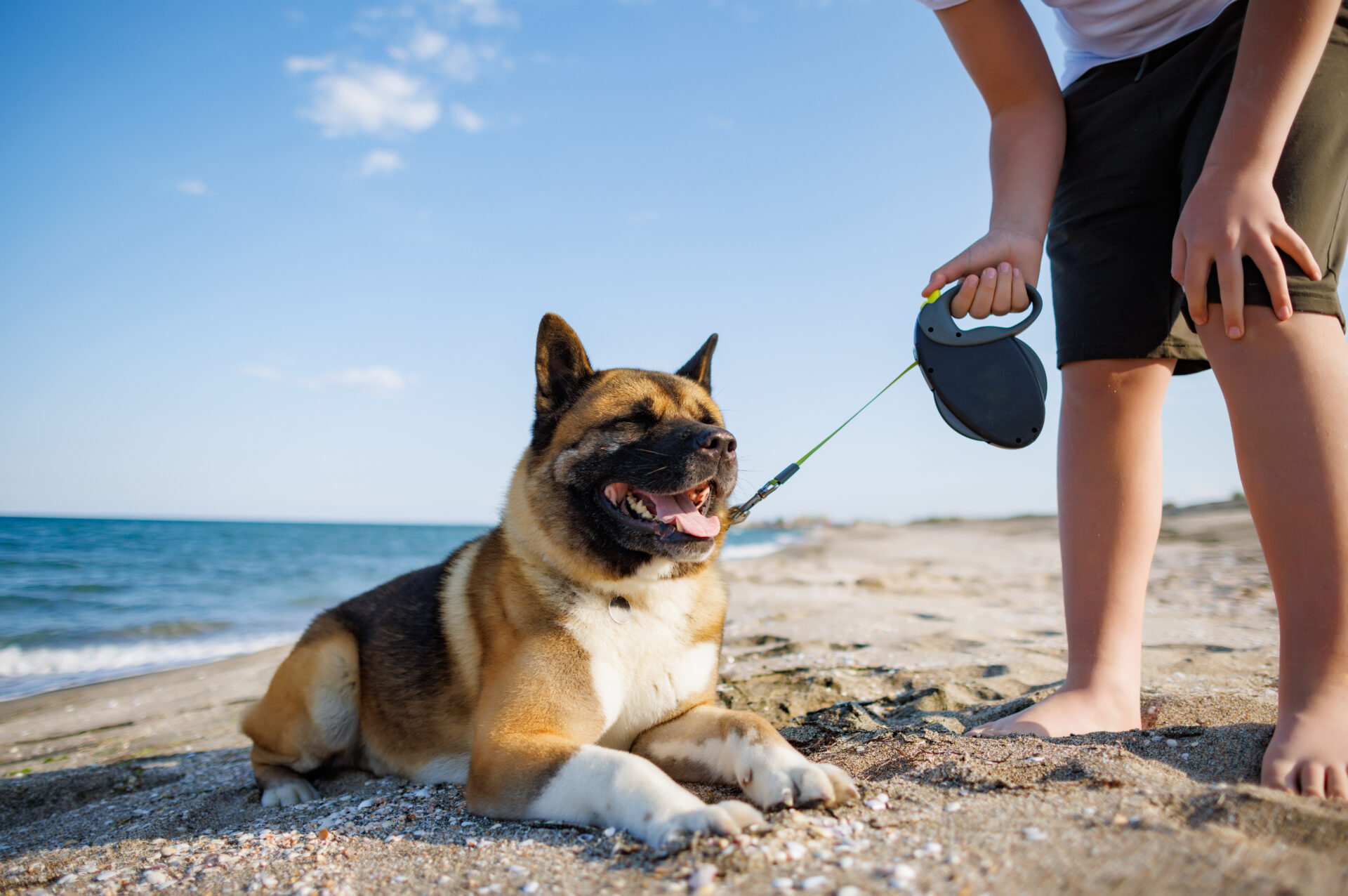
Step 3: Use Positive Reinforcement on Walks
Positive reinforcement is the most effective way to teach your dog leash manners. Rewarding good behavior encourages your dog to repeat it.
1. Start slow: Begin your walk in a quiet area with minimal distractions.
2. Reward close walking: Give your dog a treat every few steps when they walk without pulling. Use a cue like “Yes!” or “Good!” to mark the behavior you want.
3. Keep treats handy: Reward frequently at first, then gradually reduce the number of treats as your dog improves.
Consistency is key—make sure you always reward your dog for walking politely, even if they only manage a few steps at first.
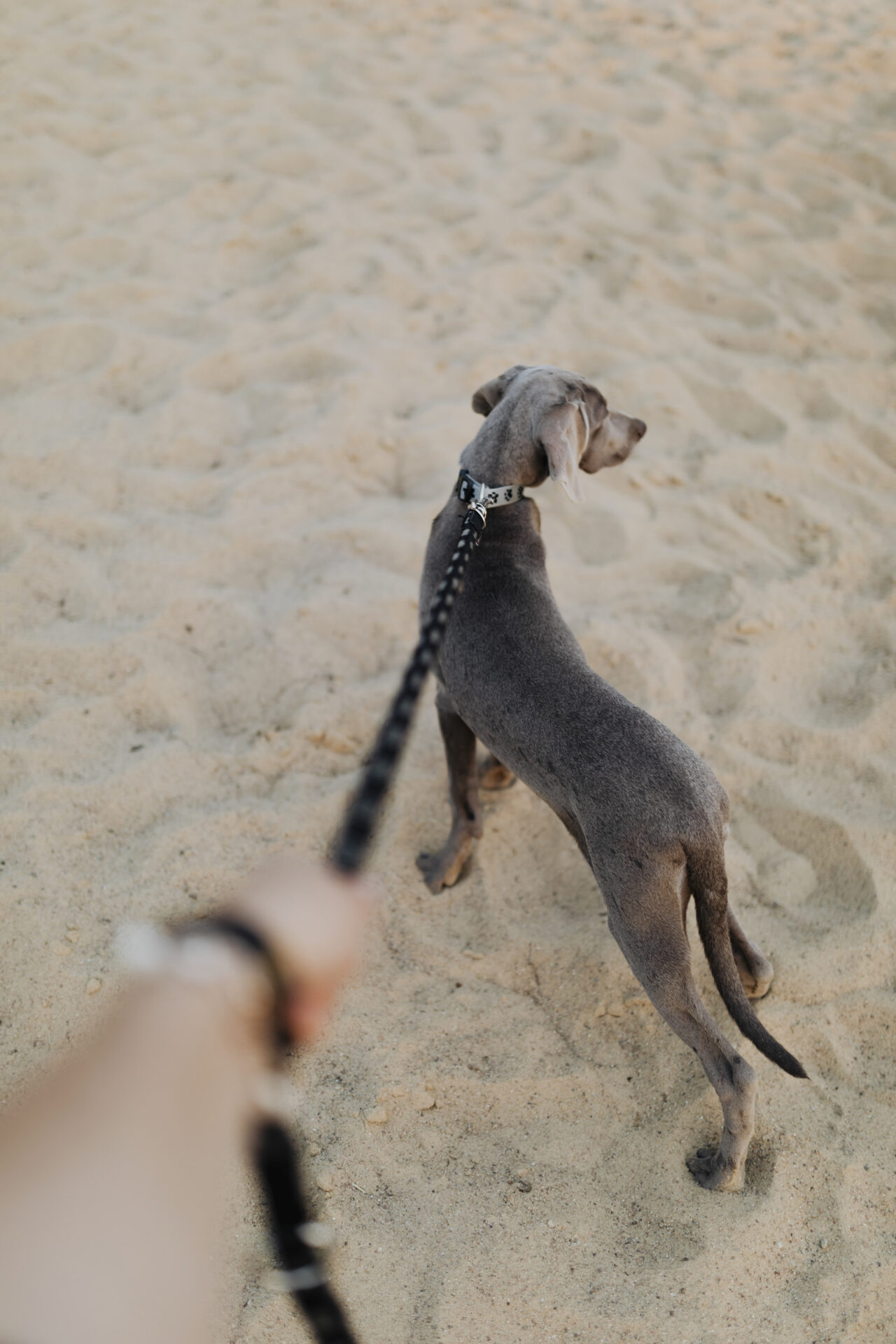
Step 4: Stop and Reset When They Pull
To discourage pulling, teach your dog that pulling on the leash won’t get them where they want to go.
1. Stop moving: The moment your dog pulls, stop walking. Don’t jerk the leash or pull back; just stand still.
2. Wait for calm: Wait until your dog stops pulling and returns to your side. Reward them with a treat and resume walking.
3. Repeat as needed: Be prepared to stop frequently at first. Over time, your dog will learn that pulling leads to no progress.
This technique requires patience but is highly effective when used consistently.
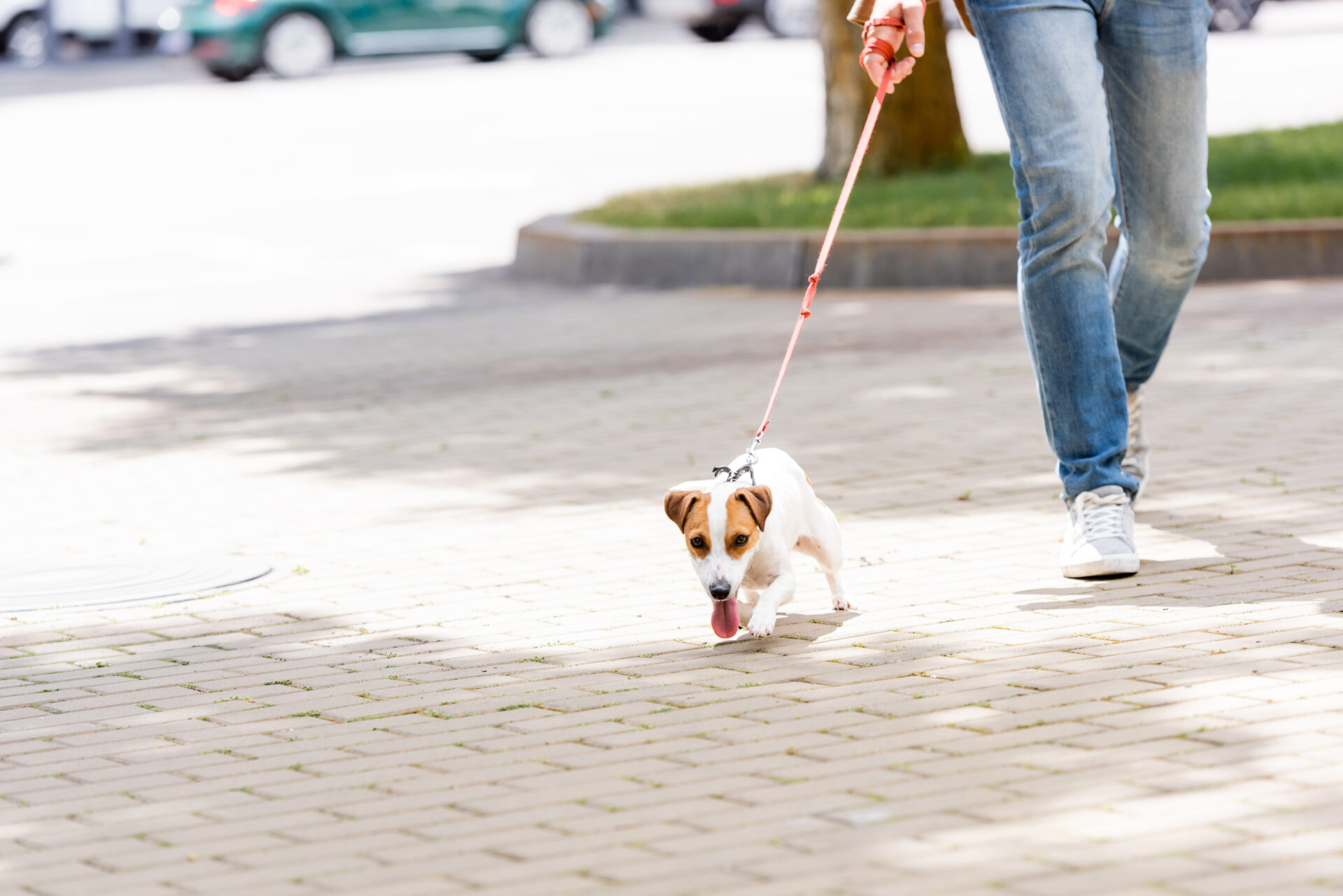
Step 5: Redirect Their Attention
If your dog gets distracted by something exciting (like another dog or a squirrel), redirect their focus back to you.
1. Use treats or a toy: Hold a treat or toy close to your body to guide their attention.
2. Practice commands: Teach commands like “Look at me” or “Watch” to encourage eye contact. Reward them when they focus on you.
3. Keep moving: Walk away from the distraction and reward your dog for following you.
Teaching your dog to focus on you during walks helps prevent pulling in high-stimulation environments.
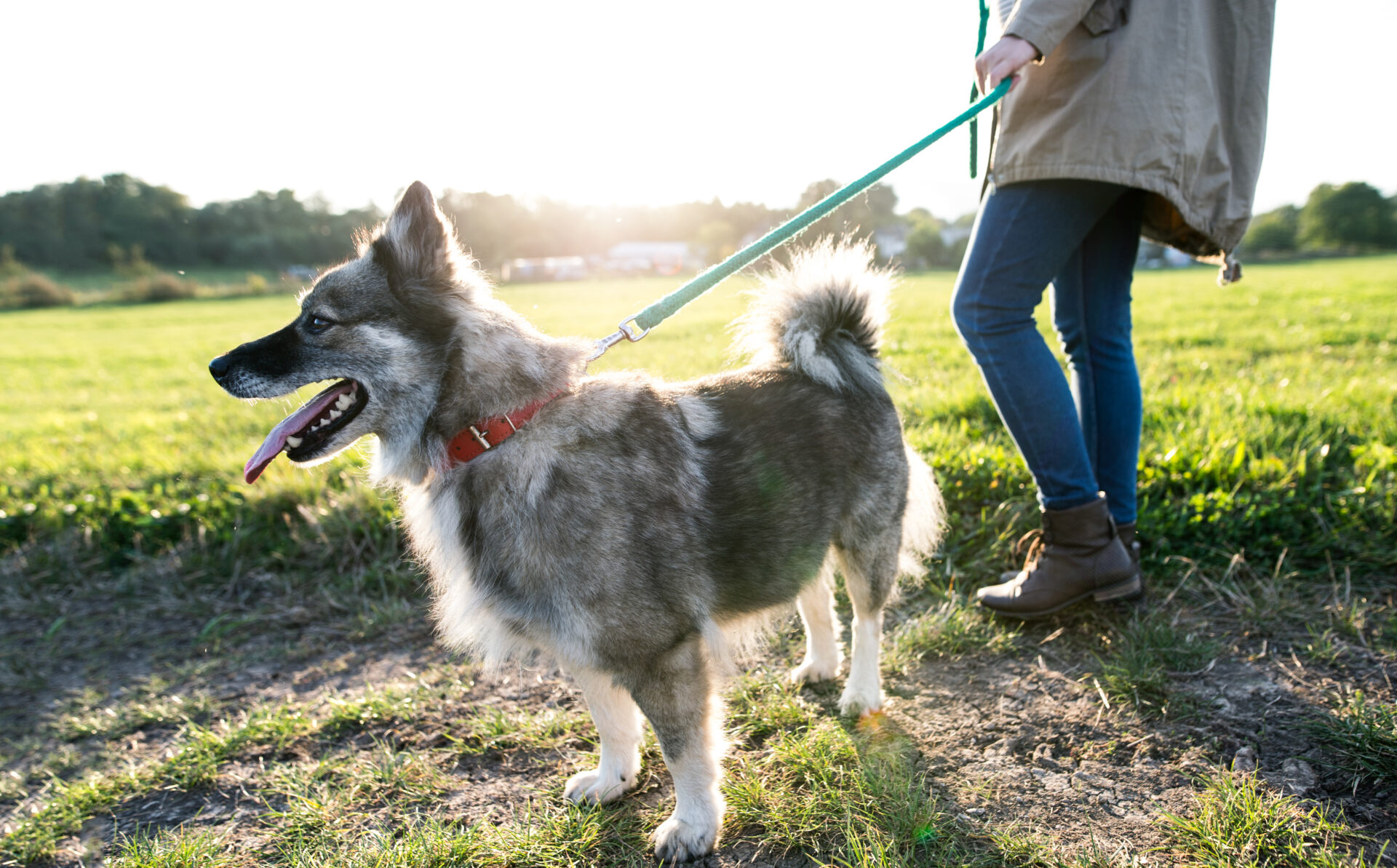
Step 6: Add Structured Walks to Your Routine
Structured walks are an excellent way to reinforce good leash behavior. These walks are less about sniffing and exploring and more about practicing leash manners.
1. Set expectations: Begin each walk with a brief training session to remind your dog of the rules.
2. Mix it up: Alternate between loose-leash walking and focused training exercises, like stopping and sitting at intersections.
3. Incorporate breaks: Allow your dog short sniffing or play breaks as a reward for good behavior.
By making training a part of your daily walks, your dog will quickly learn what’s expected of them.
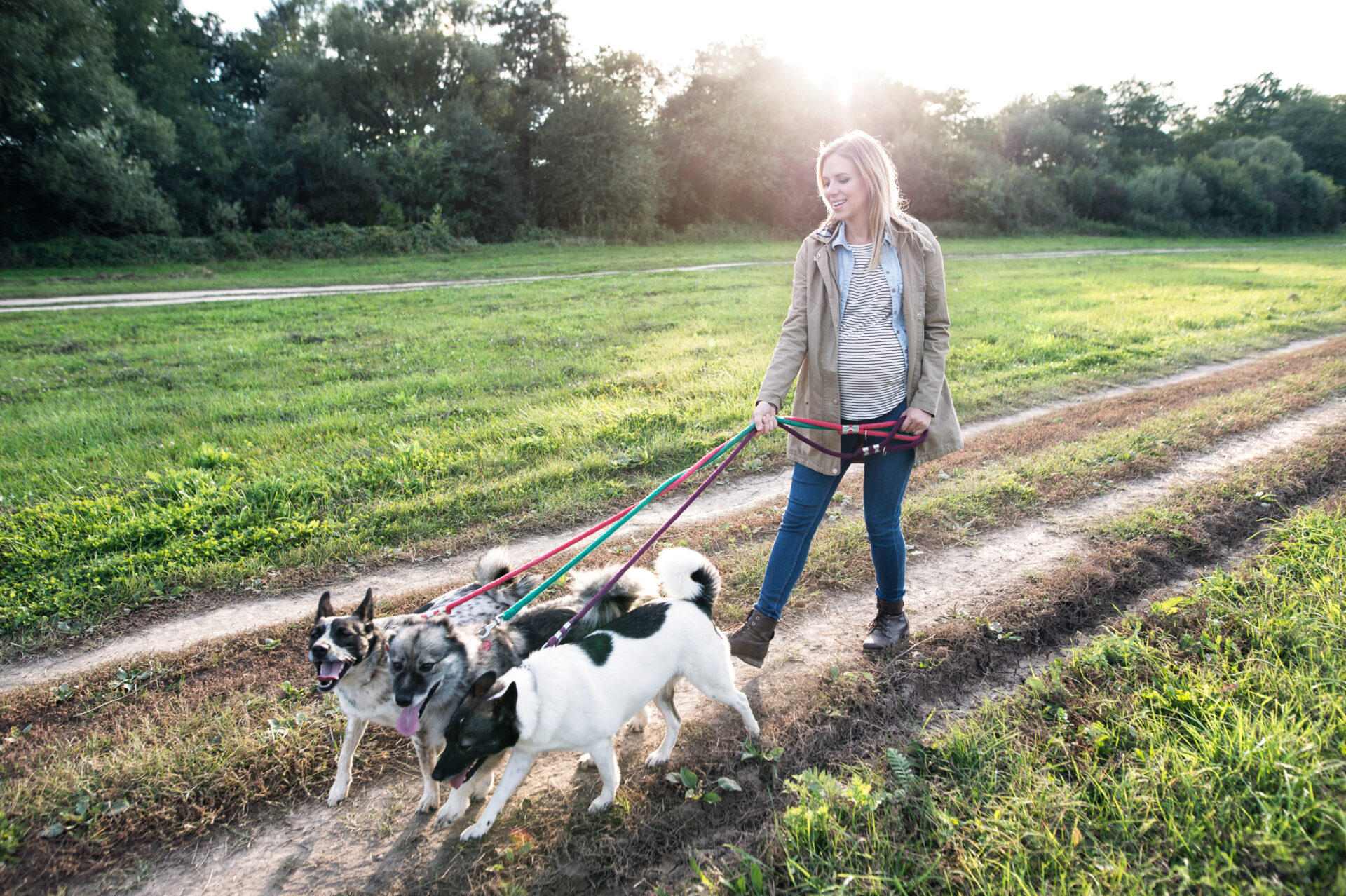
Step 7: Be Patient and Consistent
Leash training takes time, especially for dogs with strong pulling habits. Stay patient and consistent, and remember that progress might be slow at first.
- Celebrate small victories: Even a few steps of polite walking are worth celebrating.
- Stay positive: Avoid getting frustrated or resorting to punishment. Positive reinforcement is far more effective in the long run.
- Keep sessions short: If your dog becomes frustrated or overwhelmed, take a break and try again later.
Common Mistakes to Avoid
1. Inconsistency: Allowing your dog to pull sometimes but not others sends mixed signals. Be consistent in your expectations.
2. Using the wrong equipment: Avoid retractable leashes or equipment that encourages pulling.
3. Skipping rewards: Dogs need motivation to change their behavior. Without rewards, they’re less likely to learn.
4. Pulling back: Yanking on the leash can create tension and make your dog pull harder. Instead, stop and wait for them to return to your side.
When to Seek Professional Help
If you’ve tried these techniques and your dog still pulls excessively, consider working with a professional trainer. Dogs with strong pulling habits or leash aggression may need specialized training to address the issue.
Conclusion
Leash training a dog that pulls requires time, patience, and consistency, but the effort is well worth it. By understanding why your dog pulls and using positive reinforcement, you can teach them to walk calmly by your side.
Remember, every dog learns at their own pace, so don’t get discouraged if progress feels slow. With practice, your walks will become enjoyable for both you and your furry companion.
Happy training!

